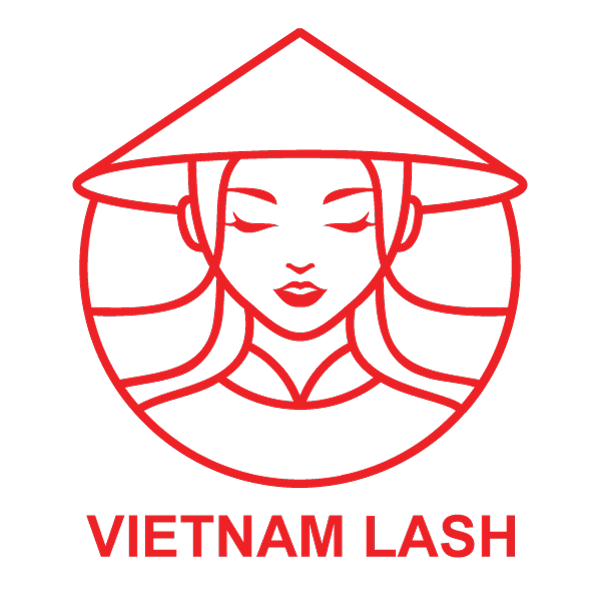Hey, lash lovers! Ready to chat about something we’re all obsessed with? Yep, you guessed it—eyelash extensions! Those magical little things that make our lashes go from “meh” to “wow” in no time. But hold up, because not everything in the lash world is rainbows and unicorns. We’re about to spill the deets on a not-so-glam side – the risk of infected eyelash extensions.
In this blog post, we’re getting real about the dangers tied to infected eyelash extensions—what causes them, the red flags to watch out for, and how to make them go away. Let’s go!
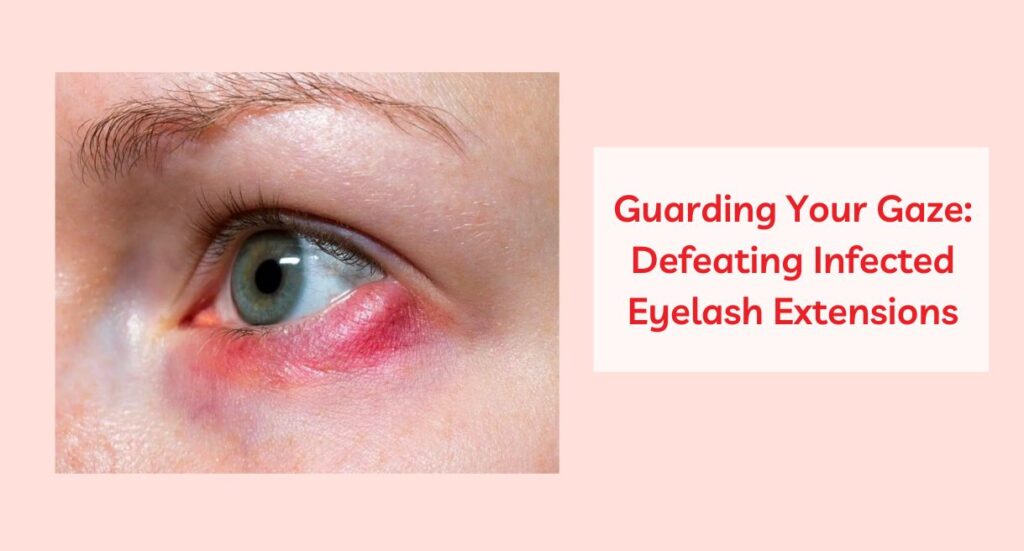
Can eyelash extensions give you an eye infection?
Unfortunately, Yes. Even though those lash extensions can make your eyes pop, they also come with some not-so-fun stuff, like eye infections and allergic reactions. In more severe instances, serious eye issues may arise due to the application of eyelash extensions. Therefore, it is essential to adhere to safety guidelines and entrust the application of eyelashes to a certified professional. Improperly applied fake lashes can also introduce bacteria and foreign objects into the eyes, emphasizing the importance of proper application.
Causes of an Eyelash Extension Infection
Let’s delve into more details about the causes of lash extension infection:
Trapped Impurities
During the application of eyelash extensions, adhesive is used to bond the extensions to your natural lashes. If the adhesive traps impurities, such as dust or debris, it creates an environment where bacteria can thrive. Normally, washing your face helps remove these impurities, but when they are trapped, they can lead to infection over time.
Lash Extension Adhesive
Eyelash extension infections can arise from various factors, and one significant contributor is the adhesive used during the extension process. The adhesive serves as the bonding agent between the artificial lashes and the natural ones, playing a pivotal role in the success of the procedure. However, certain aspects related to the adhesive can lead to infections, affecting the delicate eye area.
One common issue is allergic reactions triggered by specific ingredients in the lash extension adhesive. Some individuals may be sensitive to these components, experiencing symptoms such as redness, itching, swelling, or general discomfort around the eyes. Formaldehyde, a prevalent ingredient in certain adhesives, is known to cause allergic reactions in susceptible individuals.
Improper application practices can also contribute to infections. If the lash technician neglects proper hygiene measures, there is a risk of bacterial or microbial contamination of the adhesive or the tools used during the application process. This lack of hygiene can result in post-application infections and complications.
Additionally, the fumes released during the adhesive curing process may pose a risk. Poor ventilation in the application area can expose both clients and technicians to potentially irritating fumes, leading to discomfort or allergic reactions. Adequate ventilation is essential to mitigate this risk and create a safe environment during the lash extension procedure. Incomplete drying of the adhesive is another concern. If the adhesive does not dry properly, it can create a moist environment between the natural and artificial lashes. This moisture becomes a breeding ground for bacteria, fungi, or other pathogens, increasing the likelihood of infections.
>> Don’t overlook eyelash extension adhesive allergies! Expert guide for proper management, learn more now: Lash Glue Allergy: Causes And Treatments
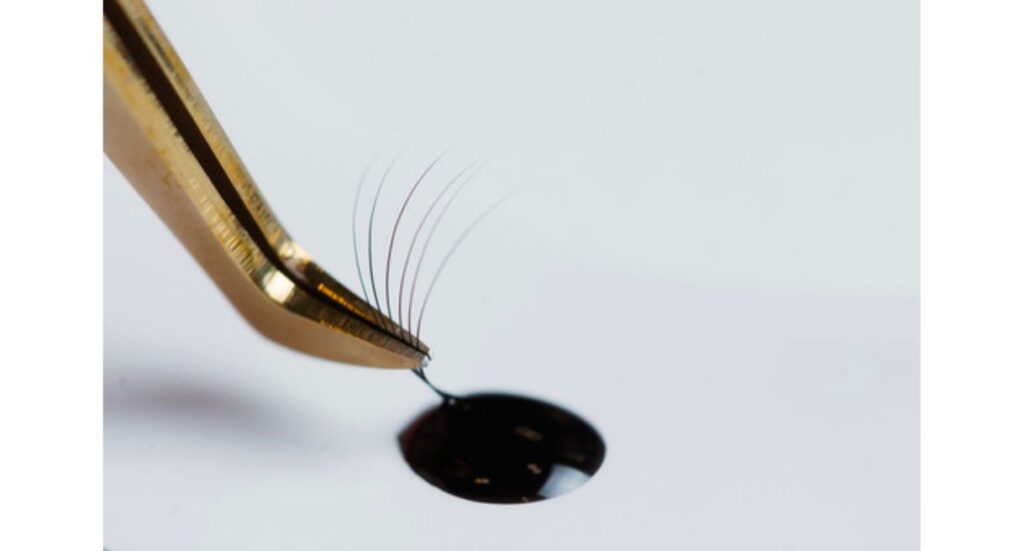
Unhygienic Tools
Eyelash extension infections can occur when the tools and equipment used during the application process are not properly sanitized or when the overall hygiene standards are compromised. Here are some key details about how unhygienic tools can lead to eyelash extension infections:
- Bacterial Contamination: If the tools, such as tweezers and scissors, used for applying eyelash extensions are not adequately cleaned and sanitized between clients, they can become a breeding ground for bacteria. When these contaminated tools come into contact with the natural lashes or the adhesive, it can introduce harmful bacteria to the eye area, leading to infections.
- Fungal Growth: Poor hygiene practices can result in the growth of fungi on the tools and equipment. Fungal infections can be particularly problematic as they may cause irritation, redness, and swelling around the eyes. Fungi thrive in moist and unclean environments, making it crucial for lash technicians to maintain a sterile working environment.
- Viral Transmission: In extreme cases, if the tools are not properly disinfected, there is a risk of transmitting viruses. Bloodborne viruses, such as hepatitis B and C, can be transmitted if there is any contact with contaminated blood. While this is rare, it highlights the importance of strict hygiene protocols, including the use of disposable tools or proper sterilization methods.
- Allergic Reactions: Unhygienic tools can also lead to allergic reactions. Residual chemicals or substances from previous use may trigger sensitivities in clients. Adhesives, in particular, can cause allergic reactions if they are not of high quality or if they have been contaminated with foreign substances.
- Cross-Contamination: When tools are not stored and handled properly, cross-contamination can occur. This means that pathogens from one client can be transferred to another, putting everyone at risk. Proper storage, cleaning, and disinfection procedures are essential to prevent cross-contamination.
To mitigate the risk of infections caused by unhygienic tools in eyelash extensions, it is crucial for lash technicians to adhere to strict hygiene protocols. This includes regular cleaning and disinfection of tools, using disposable items when appropriate, and maintaining a clean and sterile workspace. Clients should also be informed about the importance of choosing reputable and experienced technicians who prioritize hygiene to ensure their safety and well-being.
Most Common Types of Infected Eyelash Extensions
Infected eyelash extensions can arise from various sources, with bacterial, fungal, and viral infections being potential culprits.
Bacterial infections often stem from Staphylococcus aureus entering hair follicles or tiny cuts around the eyes, resulting in symptoms such as redness, swelling, pain, and discharge. Fungal infections, caused by fungi like Candida or Aspergillus, may manifest as itching, redness, and yellowish discharge, particularly if moisture becomes trapped. Viral infections, though less common, can occur, with herpes simplex leading to painful sores that may spread through contaminated tools.
Preventing infected eyelash extensions involves maintaining rigorous hygiene during application, regular cleaning of extensions, and avoiding eye contact with contaminated hands. Prompt removal of extensions upon irritation is crucial to preventing the escalation of infections.
Here are some of the most common types of infected eyelash extensions:
1. Allergic Conjunctivitis
Allergic Conjunctivitis is an inflammatory reaction affecting the conjunctiva, the thin membrane covering the white part of the eye. The adhesive used to attach lash extensions may contain allergens or irritants that can trigger an allergic response in sensitive individuals. Additionally, the synthetic materials used in the extensions themselves may cause irritation. Symptoms of Allergic Conjunctivitis include redness, itching, tearing, and swelling of the eyes.
2. Blepharitis
Blepharitis is an inflammation of the eyelids, often caused by the accumulation of bacteria and debris along the lash line. The application of lash extensions involves attaching individual synthetic fibers to natural lashes using adhesive, creating a semi-permanent bond. However, this process can disrupt the natural cleansing mechanisms of the eyelids, leading to the retention of oil, dead skin cells, and other debris. The trapped debris provides an ideal environment for bacteria to thrive, increasing the risk of blepharitis.
>> Discover more about the symptoms of eyelash extension adhesive allergies and the precise treatment approaches: Beyond Glamour: Blepharitis from Eyelash Extensions
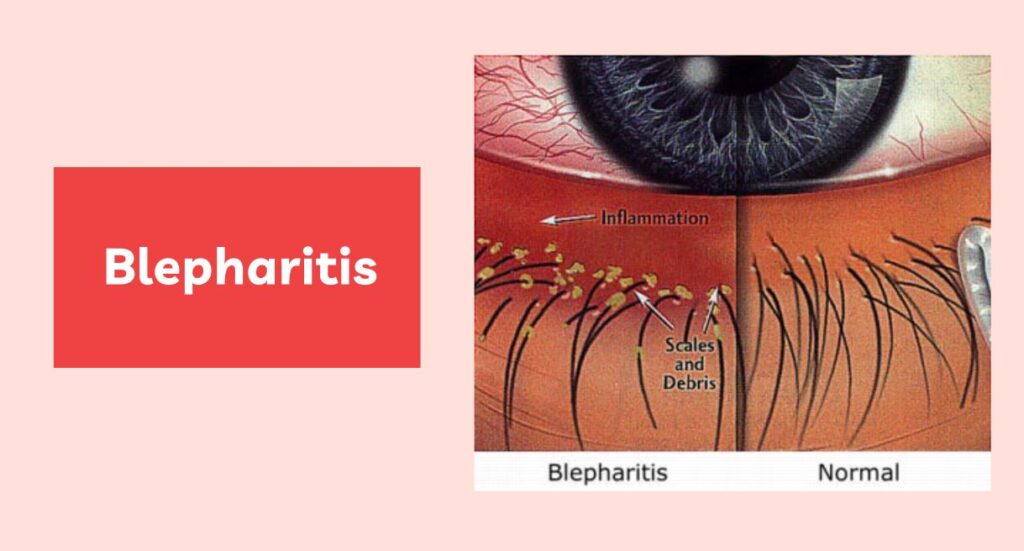
3. Conjunctivitis
Lash extensions, while enhancing the appearance of one’s eyelashes, can potentially lead to Conjunctivitis, commonly known as pink eye. This condition arises when the extensions, adhesives, or tools used during the application process come into contact with the eyes and introduce bacteria or irritants. The close proximity of the extensions to the eye increases the risk of infection, as the delicate tissues of the conjunctiva can easily become inflamed. Additionally, inadequate hygiene practices during the application or maintenance of lash extensions can contribute to the accumulation of bacteria. Symptoms of conjunctivitis include redness, itching, and discharge from the eyes.
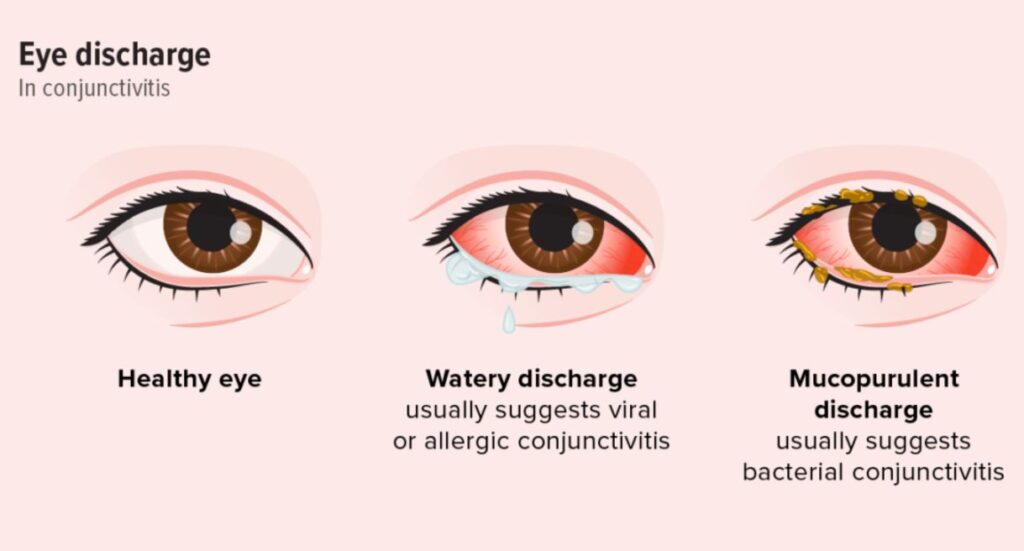
4. Demodex
Lash extensions, while enhancing the appearance of eyelashes, can potentially lead to Demodex infestation. Demodex are microscopic mites that naturally inhabit human hair follicles and sebaceous glands, including those in the eyelash area. The use of lash extensions can create an environment conducive to the proliferation of Demodex, as the extensions may trap oils and debris, providing an ideal breeding ground for these mites. Improper hygiene practices, such as infrequent cleaning of the extensions, can further exacerbate the risk of Demodex infestation. In some cases, individuals with lash extensions may experience symptoms such as itching, redness, and irritation, which can be indicative of Demodex presence.
5. Stye
A stye is a localized infection or inflammation of the eyelid glands, often caused by bacterial infection. The application of lash extensions involves the use of adhesive to attach individual synthetic lashes to natural ones. If the application process is not performed with proper hygiene or if the extensions trap dirt and bacteria, it can create an environment conducive to the development of a stye. Additionally, the weight of the extensions and the strain they place on natural lashes can sometimes lead to irritation and blockage of the eyelid glands, further increasing the risk of a stye.
Symptoms of Infected Eyelash Extensions
Itching and Redness
Persistent itching and redness around the eyes serve as early indicators of an infection related to eyelash extensions. The discomfort may be mild initially, but ignoring these symptoms can escalate the problem, making early detection crucial. It is essential to address the itching and redness promptly to prevent the infection from spreading to other areas.
>> Read more:
Swelling and Tenderness
Infected eyelash extensions can cause noticeable swelling and tenderness in the affected area. This is a result of the body’s natural response to the infection. Understanding these indicators is vital for taking prompt action and seeking professional assistance. Swelling and tenderness may also be accompanied by warmth in the affected region, further emphasizing the need for immediate attention to prevent the infection from worsening.
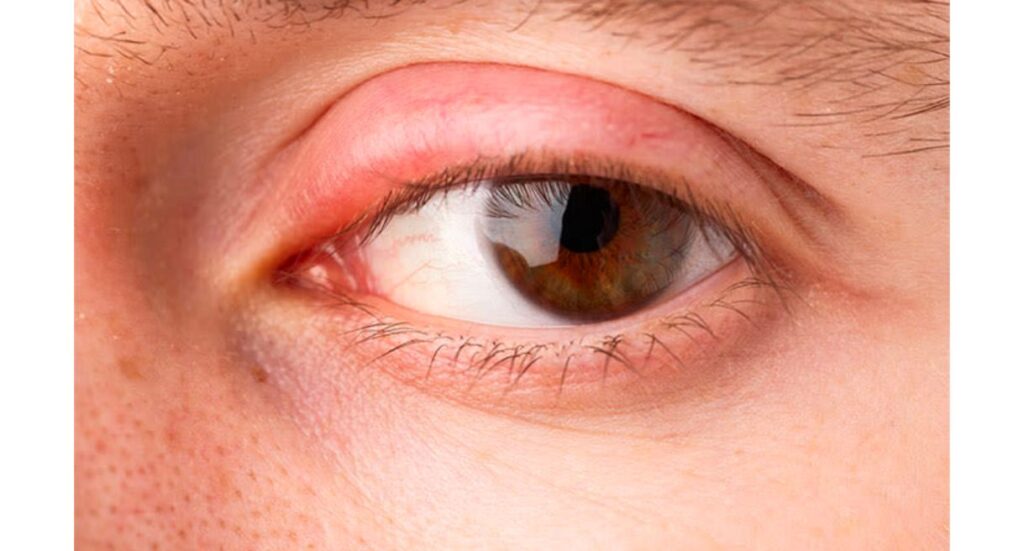
Unusual Discharge
The presence of unusual discharge from the eyes is another significant symptom of an infected eyelash extension. If the discharge is accompanied by an unpleasant odor, it further signals a potential infection. This discharge may vary in consistency and color, ranging from watery to thick and yellow or green. Recognizing this symptom is crucial for seeking timely treatment, as untreated infections can lead to more severe eye complications.
It is important to note that any signs of eye infection from lash extensions should not be ignored. Seeking professional advice and promptly addressing these symptoms can help prevent further complications, such as the spread of the infection to other eyelashes or the development of more serious eye issues.
How to Avoid or Reduce the Risks of Infected Eyelash Extensions
For lash techs:
Before providing any service, ensure your client has no allergies to the products you’ll use and ask them to disclose any allergies. Have clients sign a consent form, and for new or pregnant clients, conduct a patch test before the appointment.
Opt for eyelash adhesives from reputable brands with fewer toxic chemicals, applying small amounts during the service. Choose natural, perfume-free cleansers and products.
After each service, thoroughly clean and sanitize your workspace and tools to prevent infections. Use disposable/single-use items like eye pads, mascara wands, and tape for each client; never reuse these products on another client.
For Clients:
- Choose a Reputable Technician: Research and select a certified and experienced lash technician who follows strict hygiene protocols.
- Ask About Adhesive Ingredients: If you have a history of allergies, inquire about the ingredients in the adhesive used for eyelash extensions to ensure they are safe for you.
- Follow Aftercare Instructions: Adhere to the aftercare instructions provided by your lash technician, including avoiding oil-based products and refraining from excessive rubbing of the eyes.
- Regular Cleaning: Gently clean your eyelashes with a lash-safe cleanser to remove debris and prevent bacterial buildup.
- Be Mindful of Touching: Avoid touching or rubbing your eyes, as this can introduce bacteria and compromise the adhesive.
How to Treat Infected Eyelash Extensions
If you suspect that your eyelash extensions are infected, it’s crucial to prioritize your eye health and seek prompt attention. An infection from eyelash extensions area can lead to serious complications if not addressed properly. Here are some general guidelines on how to treat eye infection from eyelash extensions:
Firstly, it’s important to stop using any makeup or beauty products in the eye area, including mascara and eyeliner. This will help prevent further irritation and contamination.

Gently cleanse the affected area with a mild, non-alcoholic cleanser or saline solution. Avoid rubbing your eyes, as this can exacerbate the infection and potentially spread it to other areas.
If you experience redness, swelling, or discharge, consult with an eye care professional immediately. They can properly diagnose the infection and prescribe the appropriate treatment, which may include antibiotic eye drops or ointments.
Refrain from attempting to remove the eyelash extensions yourself, as this can worsen the infection and potentially damage your natural lashes. Professional help is essential to ensure the safe removal of the extensions without causing harm.
During the treatment period, avoid swimming, hot tubs, and any activities that may expose your eyes to additional irritants or contaminants.
For immediate relief from sensations like burning or itchiness, a cold compress can be applied. This can be achieved by wrapping ice or a cold pack in a clean cloth and gently placing it on the affected area. However, it’s important to note that this is a comfort measure and not a definitive treatment – only a lash technician can provide the necessary treatment for any issues related to the eyelash procedure.

Additionally, over-the-counter remedies may be considered for symptomatic relief. Eye drops can help soothe irritation, and hydrocortisone cream or ointment may be applied to the affected area to reduce inflammation. Antihistamines, whether prescribed or purchased from a pharmacy, can also be beneficial for managing allergic reactions or excessive itching.
Remember that early intervention is key to preventing complications. Ignoring or delaying treatment for an eyelash extension infection can lead to more severe issues, such as corneal damage or vision impairment. Always prioritize your eye health and seek professional advice for the best course of action. If you experience any adverse reactions or persistent symptoms, consulting with a healthcare provider is essential for a thorough evaluation and appropriate management.
Conclusion
Alright, fam, here’s the deal – eyelash extensions are like that cool friend who adds sparkle to your life. But, like any friendship, there might be a hiccup or two. Armed with some knowledge and a dash of aftercare, you can rock those extensions without the drama that is infected eyelash extensions. So, let those lashes flutter, but make sure they’re doing it in the glow of health and laid-back glam! Stay fabulous, lash queens and kings!
Explore our website at www.vietnamlash.com to uncover a world of fascinating information, expert tips, and insightful articles.
